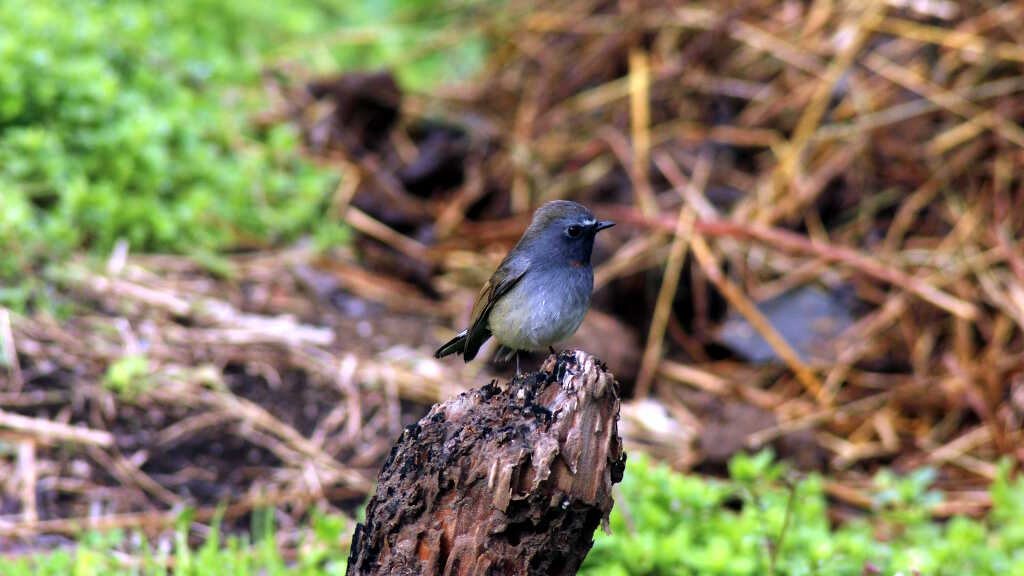
Ficedula strophiata (Rufous-gorgeted flycatcher)
The Rufous-gorgeted flycatcher (Ficedula strophiata) is a striking and vocal member of the flycatcher family, often spotted in the cool forested zones of the Great Himalayan National Park (GHNP). With its distinctive rufous throat patch and elegant posture, this bird is a welcome sight for birdwatchers exploring the diverse avifauna of the western Himalayas.
Appearance and Identification
The Rufous-gorgeted flycatcher is a small passerine bird, about 13 cm in length. Males are easily recognized by their slate-blue upperparts, white underparts, and the prominent rufous-orange patch—or “gorget”—on their throats. Females are plainer but still graceful, with more subdued coloration. Their fine upright stance and fluttery flycatching behavior make them an enjoyable species to observe.
Habitat and Behavior in GHNP
In GHNP, this bird is commonly found in dense undergrowth, forest edges, and along wooded trails, usually at elevations between 1,500 and 3,000 meters. It prefers mixed oak, pine, and rhododendron forests where it can forage close to the ground or on low branches.
The Rufous-gorgeted flycatcher is an active insectivore, feeding on small insects mid-air or gleaned from foliage. It has a soft, high-pitched call and an understated but sweet song, often heard more than the bird is seen.
| Common name | Rufous- gorgeted Flycatcher |
| Scientific name | Ficedula strophiata |
| Family | Muscicapinae (Flycatchers, Niltava) |
| Description | Rufous- gorgeted Flycatcher having rufous gorget, and white coloration on the sides to black tail. Female duller than male. Juvenile with orange – buff spotting on upperparts. It is a common resident bird of Himachal Pradesh and is a Winter Migrant. It breeds at an altitude of 2400- 3700 m. |
Seasonal Movement and Breeding
This species is known for altitudinal migration, moving to lower elevations during colder months. It breeds between April and June, constructing neat cup-shaped nests in crevices or on sloping branches. The male often sings during the early morning to defend its territory and attract a mate.
Conservation Notes
Classified as Least Concern by the IUCN, the Rufous-gorgeted flycatcher is fairly widespread across the Himalayan belt. The undisturbed habitats within GHNP provide a safe breeding and foraging environment for this and many other insectivorous birds.



